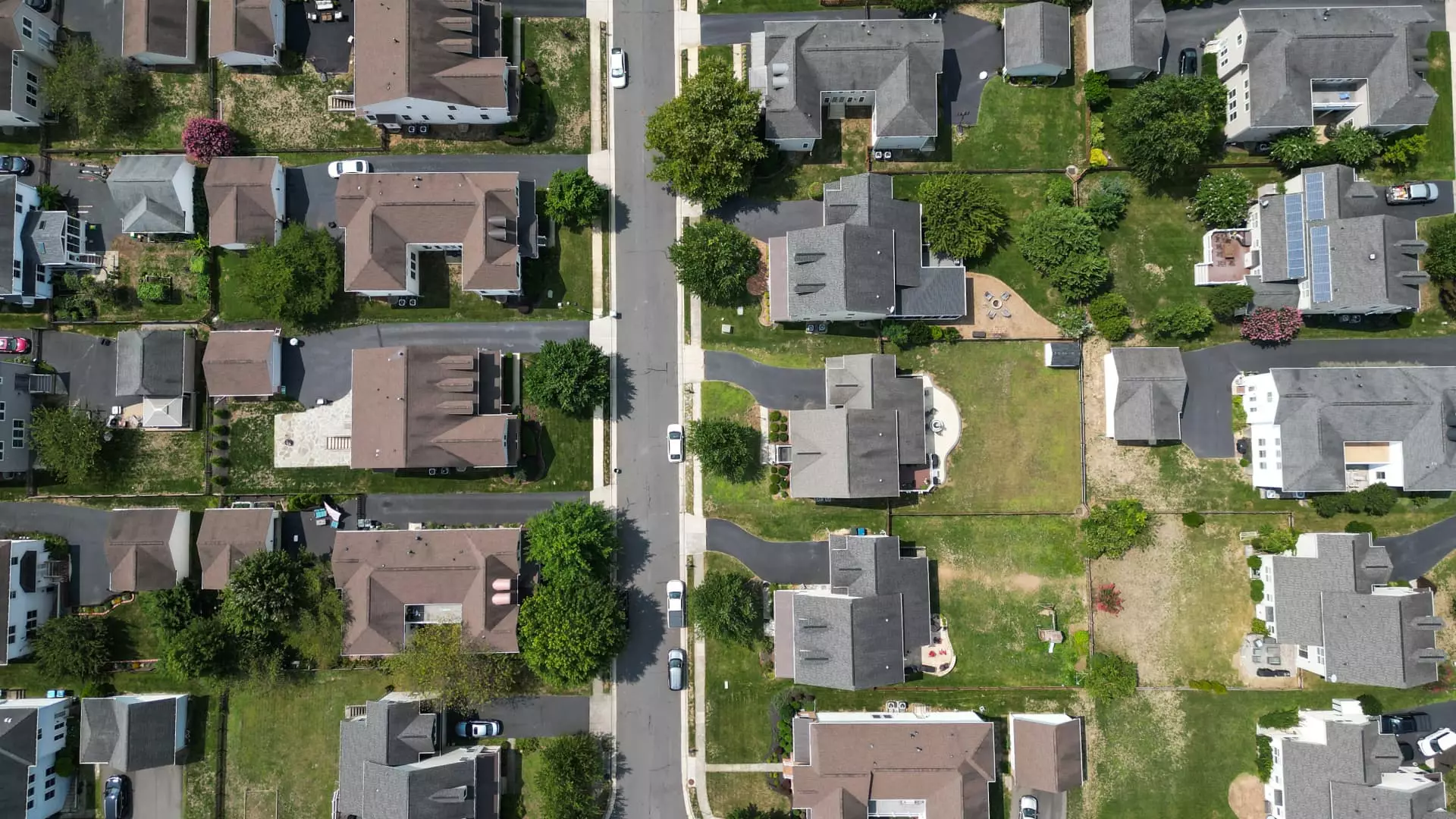Recent fluctuations in mortgage rates signal a troubling trend, yet demand remains eerily resilient — at least on paper. Mortgage rates have nudged upward to a four-week high, climbing to 6.84% for a typical 30-year fixed-rate loan. Surprisingly, this increase didn’t cut into the overall application volume, which edged up by 0.8%. This juxtaposition reveals a distorted market reality: interest rates are a key determinant for many, yet the housing market continues to hold steady, reflecting a deeper resilience or perhaps a false sense of security among buyers and investors.
Make no mistake—this slow yet persistent rise in rates isn’t benign. It undercut refinancing activity sharply, with applications decreasing by 3%. While these applications remain 22% higher than last year, the context is misleading; the volume is small, and the higher rates threaten to dry up refinancing options for homeowners looking to reduce their monthly payments. In contrast, purchase applications have dipped marginally by 3%, yet remain substantially higher than last year, underlining an underlying desperation to secure property investments amidst an uncertain economic landscape.
What Does Rising Mortgage Rates Say About Market Confidence?
At first glance, the housing market’s stubbornness might seem like a sign of underlying strength. However, this complacency masks underlying vulnerabilities. The average purchase loan amount has fallen from a peak of $460,000 in March 2025 to roughly $427,000, echoing growing affordability concerns. Fewer buyers can afford to take on larger loans, and rising rates only exacerbate this issue.
Market reactions to political and economic signals—such as Treasury Secretary Scott Bessent’s remarks about Federal Reserve Chairman Jerome Powell—highlight an underlying nervousness. Bond yields, which influence mortgage rates, are directly impacted by these political developments, and any hint of leadership upheaval or policy uncertainty threatens to destabilize the fragile balance housing markets currently cling to. The current landscape feels like a delicate dance on the edge of instability, where even small shocks can lead to significant declines in activity.
The Illusion of Stability in an Uncertain Future
What emerges from this data is a complex picture: demand appears stable, but beneath the surface, the foundations are shaky. The housing market’s resilience might be more an act of temporary inertia than genuine strength. Homebuyers and financiers are adapting to higher rates, but this cannot last indefinitely. As borrowing costs increase, we will likely see a sharp contraction in real demand, pushing the market toward a correction.
The broader political climate—marked by monetary policy debates and global economic tensions—only fuels uncertainty. While the market currently appears to resist the pushback of rising mortgage costs, this resistance feels superficial. It is akin to a fragile veneer that, with the slightest disturbance, could crack wide open, revealing a more troubled reality beneath. The indication that rates are likely to stay elevated, or even rise further, paints a discouraging picture for prospective homeowners and advocates for affordable housing. The market’s current steadiness might simply be a lull before inevitable turbulence hits, fueled by the ongoing discord in fiscal and monetary policy decisions.

